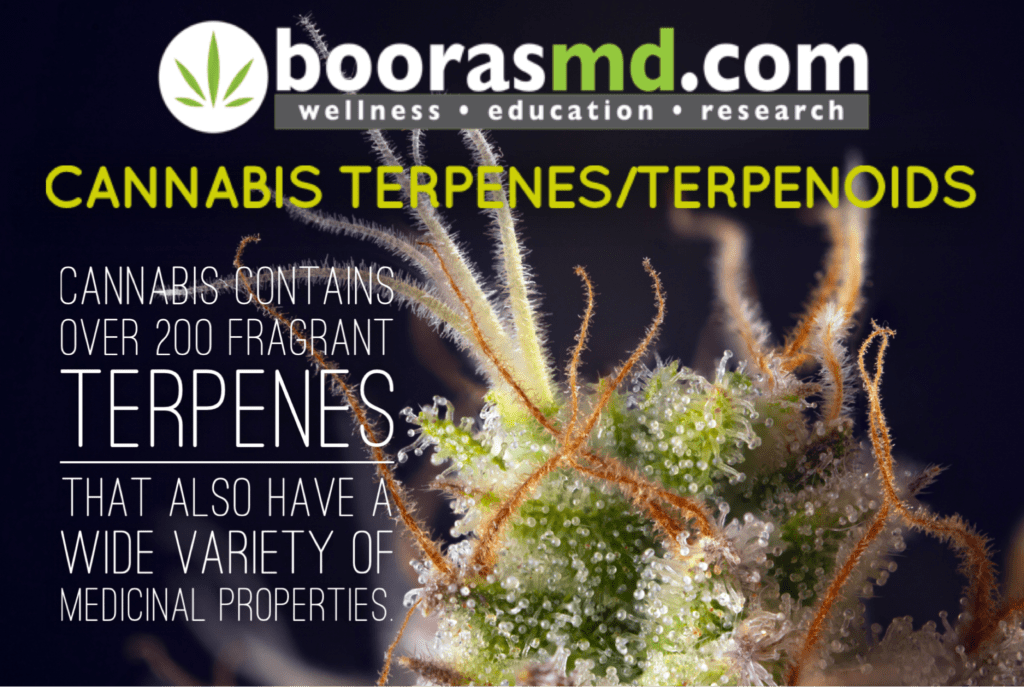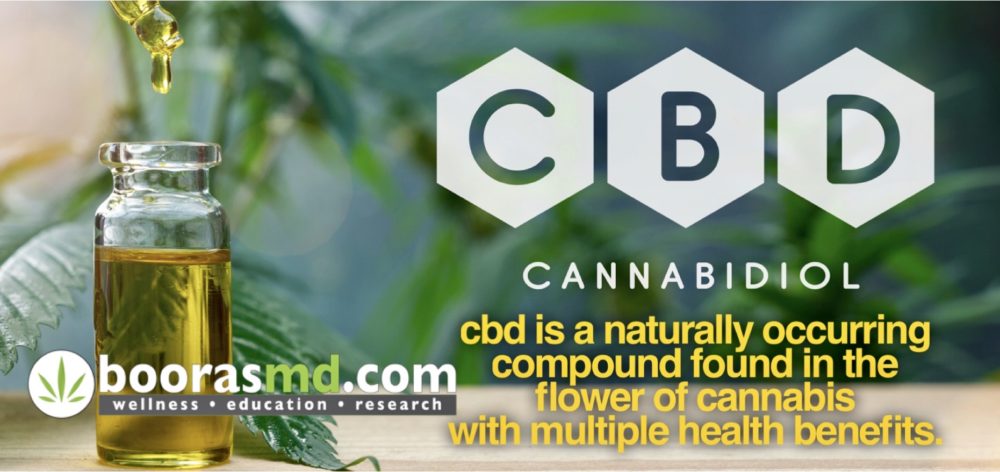Cannabis Terpenes/Terpenoids
Cannabis Terpenes/Terpenoids
Summary: Terpenes are a group of over 20,000 fragrant molecules existing in nature. There are about 200 of these molecules produced by the cannabis plant that have therapeutic properties. Terpenoids are related to Terpenes and and the two terms are often used interchangeably. For the sake of this article, I will referred to them both as Terpenes.
The three main benefits of Terpenes include the reduction of Pain, Inflammation and Anxiety. As you will see below, they have a multitude of other benefits.
Terpenes interact with cannabinoids (THC, CBD, etc) in a synergistic manner whereby their benefits are magnified when taken together. This is called the “Entourage Effect” which can be simplified by saying 2 + 2 equals 8 rather than 4.
What follows is a general summary of the Major Terpenes produced by cannabis. (There are a multitude of other terpenes with medicinal properties that are not included here).
- Myrcene. This is the most common terpene in cannabis and can constitute up to 50% of the terpene volume in an individual cannabis plant. It is the precursor to producing other terpenes. Myrcene is also found in Mango, Hops, Lemongrass and Thyme. It has sedative properties along with reduction in pain, inflammation, muscle spasticity, seizures, depression and anxiety. It also helps with sleep. It affects the ability of THC to penetrate the blood-brain barrier and activate CB1 receptors in the brain.
- Pinene. It is found in the oils of pine trees along with Rosemary and other herbs. It is the most common terpene in the plant world. It’s therapeutic benefits include a reduction in inflammation, anti-cancer properties, bronchodilation (opening of the airways, which is particularly important for people with asthma), improved alertness, focus and memory retention via activity as an acetylcholinesterase inhibitor (useful for people with dementia). It has also been shown to have antibacterial properties, specifically against MRSA.
- Limonene. Primarily found in the peels of citrus fruits and is associated with a strong lemon-lime or orange aroma. It is the second most widely distributed terpenoid in nature and is the precursor to other terpenoids. It has been demonstrated to have anti-anxiety and anti-depressant properties in addition to some benefits for people with breast cancer.
- Caryophyllene (or Beta-Caryophyllene). This terpene has a peppery aroma and is another common terpene found in cannabis. It is present in about 80% of all cannabis strains and can be characterized as both a cannabinoid and a terpene. It can also be found in Black Pepper, Cloves, Basil, Cinnamon, Hops, Oregano, Black Caraway, Lavender and Rosemary. Its therapeutic benefit is primarily as an anti-inflammatory and pain reduction. It is helpful for inducing sleep and may help people who are recovering from an addiction to alcohol. It has been found to act as both an antifungal and antibacterial agent. A 2018 study published in the British journal a pharmacology showed that it helps protect against the development of alcoholic fatty liver by reducing inflammation. It binds with the CB2 receptor of the Endocannabinoid system and induces production of the major endocannabinoid, Anandamide, making it useful for people with anxiety and depression.
https://bpspubs.onlinelibrary.wiley.com/doi/pdf/10.1111/bph.13722 ***Interestingly, Caryophylline is the cannabis component used by drug sniffing dogs to detect cannabis.*** - Linalool. This terpene has a rather strong lavender aroma. It has sedative benefits. It also affects serotonin receptors, making it useful for people with anxiety and/or depression. It helps with insomnia and has shown potential to help treat several types of cancer. It has shown benefit as a topical preparation to treat skin conditions and reduce burn-related scarring. It is also useful as an insecticide in addition to local anesthetic properties.
- Camphene (AKA Comphene). Its aroma is earthy wood and fir. Besides cannabis, it is also produced by Conifer, Holy Basil, Nutmeg and Rosemary. Therapeutic benefits include antibacterial and anti-fungal properties. It is also been used in people with eczema and psoriasis. It has expectorant properties for people with cough. A 2011 study (in rats) showed that it can lower cholesterol and triglycerides.
https://journals.plos.org/plosone/article?id=10.1371/journal.pone.0020516#s3
Additional references:
https://bpspubs.onlinelibrary.wiley.com/doi/pdf/10.1111/j.1476-5381.2011.01238.x
https://hightimes.com/guides/understanding-terpenes/
https://strainprint.ca/understanding-terpenes-myrcene/#
Updated July 7, 2022



